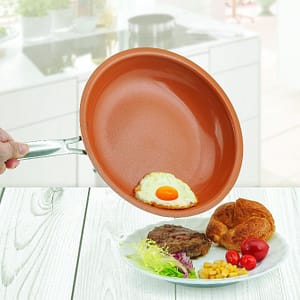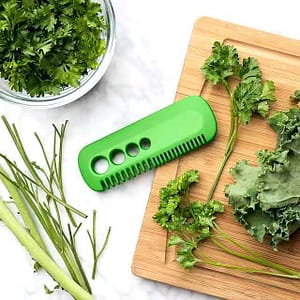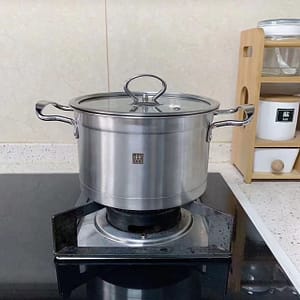
Blog Details

The Hidden Reason Your Stainless Steel Isn’t Shining (and How to Fix It!)
Is your stainless steel looking dull, streaky, or just not as brilliant as it once was? You’ve scrubbed, wiped, and tried every cleaner, but that pristine gleam seems to be a distant memory. Don’t worry, you’re not alone, and the reason might surprise you. It’s often not about how hard you clean, but what’s left behind.
The Invisible Culprit: Mineral Buildup and Residue
Many assume a dull finish means dirt or grime, but the real saboteur of your stainless steel’s shine is often mineral buildup from hard water and residues from cleaning products.
Think about it: every time you wipe down your fridge, sink, or dishwasher with tap water or a generic cleaner, tiny dissolved minerals like calcium and magnesium are left behind as the water evaporates.
Over time, these invisible layers accumulate, creating a cloudy film that obscures the natural luster of the steel. Even some “stainless steel cleaners” can leave a slight residue that builds up, trapping dirt and making your appliances look less than sparkling.
Why “Clean” Isn’t Always “Shiny”
Stainless steel gets its name from its resistance to staining and corrosion, thanks to a protective layer of chromium oxide. This layer needs to be clean and exposed to light to truly reflect and shine. When it’s covered in mineral deposits or product residue, it can’t do its job, leading to that frustratingly dull appearance.
Reclaim the Gleam: Simple Steps to Restore Shine
Restoring your stainless steel’s brilliance is surprisingly simple, once you know the secret! Forget harsh chemicals; often, the best solutions are natural.
- The Vinegar Powerwash:
- Mix equal parts white vinegar and water in a spray bottle.
- Lightly spray the stainless steel surface.
- Wipe immediately with a clean, soft microfiber cloth, following the grain of the steel. Vinegar is acidic and excellent at dissolving mineral deposits.
- Olive Oil for the Finish:
- After cleaning with vinegar, put a tiny dab of olive oil on a separate, clean microfiber cloth. You need much less than you think – just a drop or two.
- Buff the stainless steel surface in the direction of the grain. This step helps to repel fingerprints, add a subtle protective layer, and enhance the shine.
- Consistency is Key:
- For everyday cleaning, stick to a damp microfiber cloth and dry immediately to prevent water spots.
- Avoid abrasive sponges or harsh chemical cleaners, which can scratch the surface or leave more residue.
Don’t Forget Your Smaller Stainless Steel Essentials!
This method isn’t just for large appliances! Your stainless steel pots and pans, cutlery, and even smaller kitchen gadgets can benefit. Ever noticed water spots on your favorite mixing bowls after washing? A quick wipe with vinegar and a buff with a tiny bit of olive oil will have them gleaming like new. For stubborn spots inside pots, a gentle scrub with a paste of baking soda and water can lift burned-on residue without scratching. (Our KitchenWhizdom Mixing Bowl Set is designed to truly shine, but even the best need a little TLC!)
FAQ: Your Stainless Steel Shine Questions Answered
Can I use this method on all types of stainless steel?
Yes, this method is safe and effective for most common stainless steel finishes found on appliances, sinks, cookware, and utensils. Always test a small, inconspicuous area first if you’re unsure.
How often should I clean my stainless steel this way?
For appliances that see daily use, a quick wipe with a damp microfiber cloth is usually sufficient. The vinegar and olive oil treatment can be done weekly or bi-weekly, or whenever you notice dullness or streaks returning.
My stainless steel has scratches. Will this method fix them?
Unfortunately, this method helps with shine and removing residue, but it won’t remove existing scratches. For minor scratches, there are specialized stainless steel scratch repair kits available, but prevention is always best!
Can I use paper towels to clean stainless steel?
While you can use paper towels, they often leave lint and can be less effective at buffing than a good quality microfiber cloth. Microfiber cloths are highly recommended for their ability to pick up grime and buff surfaces without leaving streaks or lint.
By understanding that residue, not just dirt, is the enemy of shine, you can easily restore the brilliant luster to your stainless steel. Give these simple steps a try, and prepare to be amazed at how easily you can reclaim that “new appliance” gleam!
Our Products
-
Cooking Baked Goods Meat Thermometer
$14.51 Select options This product has multiple variants. The options may be chosen on the product page -
Sweettreats Non-stick Copper Skillet
$30.49 – $55.44 Select options This product has multiple variants. The options may be chosen on the product page -
Vegetable Leaf Peeler Vegetable Peeler Mini
$7.55 Select options This product has multiple variants. The options may be chosen on the product page -
Double Same Style Stainless Steel Stock Pot Steamer
$64.52 Select options This product has multiple variants. The options may be chosen on the product page -
Stainless Steel Colander Noodle Dumplings Mesh Basket
$27.73 – $32.26 Select options This product has multiple variants. The options may be chosen on the product page -
3 In 1 Multifunctional Rotary Paring Knife
$9.27 – $31.01 Select options This product has multiple variants. The options may be chosen on the product page
Products
-
Cooking Baked Goods Meat Thermometer
$14.51 Select options This product has multiple variants. The options may be chosen on the product page -
Sweettreats Non-stick Copper Skillet
$30.49 – $55.44 Select options This product has multiple variants. The options may be chosen on the product page -
Vegetable Leaf Peeler Vegetable Peeler Mini
$7.55 Select options This product has multiple variants. The options may be chosen on the product page -
Double Same Style Stainless Steel Stock Pot Steamer
$64.52 Select options This product has multiple variants. The options may be chosen on the product page








